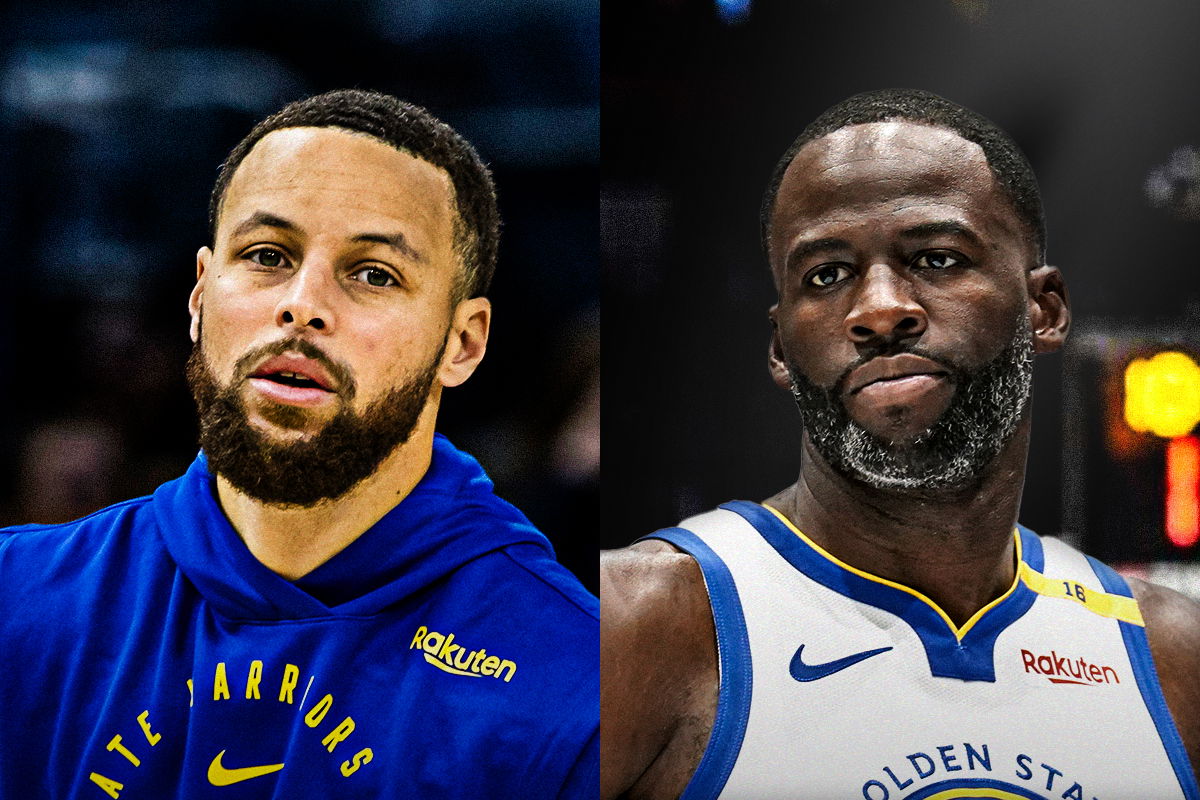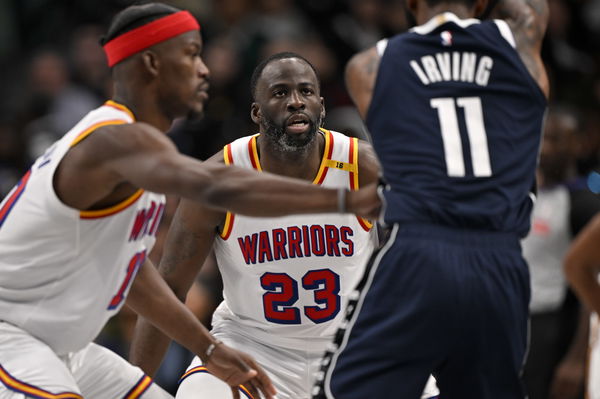
Imago
Credits: Imagn

Imago
Credits: Imagn
He’s not hurt. He’s not benched. But for the first time in a Warriors playoff opener, Draymond Green looked like a passenger. No viral outburst. No dramatic scene. Just a sideline moment—Steve Kerr locked in with Steph Curry and Jimmy Butler, adjusting on the fly as the game unfolded. And Draymond? Missing from that huddle.
Watch What’s Trending Now!
“It was such a great picture,” said TNT’s Kevin Harlan during the second quarter broadcast. “Watching Kerr talk with his two leaders as the game progressed—tightening the screws. One goal. Just winning.”
This isn’t about stat lines—at least not yet. This is about identity. For the last decade, Draymond’s voice has been central to everything the Warriors have done. But with Jimmy Butler’s arrival—and the authority he’s commanding just months into his Golden State tenure—the internal hierarchy may be shifting in real time.
ADVERTISEMENT
Curry, for his part, turned it up, as he always does. His deep three from the Toyota Center logo helped spark an 18-5 run that flipped the early tone. Butler backed it up with active defense, quick decision-making, and the kind of playoff composure that Golden State has craved since Iguodala’s prime.
And Draymond? He started. He played. But he wasn’t steering. It was Moody, Podziemski, and Gui Santos who rounded out the key stretches. Draymond didn’t close the half, didn’t ignite the run, and certainly wasn’t featured in the Warriors’ new go-to combination. With Butler assuming the defensive quarterback role and Santos bringing unexpected juice off the bench, Kerr seems to be rethinking what “balance” looks like in his lineups.
But what doesn’t sit well right now that his voice—once inseparable from the Warriors’ identity—felt muted. Not erased, but faded. This didn’t feel like a tactical decision. But what do we call it? A shift perhaps? Is Kerr simply riding the moment? Or are we witnessing the quiet beginning of a leadership handoff?
ADVERTISEMENT
The New Voice in the Room—and why Draymond’s listening
Game 1 didn’t just show us how the Warriors play with Butler—it showed us who gets to lead when the game slows down. This wasn’t just about the 25 points or 42 minutes. It was the demeanor. Butler’s energy was dialed into a different frequency—louder, more volatile, more playoff-specific.
ADVERTISEMENT
“He’s losing it if he doesn’t touch the ball for two possessions. He’s on guys for lazy defense. It’s wild to watch,” Draymond Green admitted after their last play-in game. “Even for me, having been in a million playoff series, it’s super interesting.”
That intensity isn’t disruptive—it’s directional. Every scream, every glare, every loose-ball sprint is a reminder that Butler isn’t just here to fit in. He’s here to lead. And Golden State, surprisingly, is letting him.
Since his arrival, the Warriors have become a better halfcourt team. They rank among the league’s best in free-throw rate. Turnovers have dropped. Curry’s efficiency has spiked, particularly in late-clock situations. And those long-dreaded non-Steph minutes? Now manageable.
ADVERTISEMENT
It’s not just the system that’s changed. The standards have. Which is why Jonathan Kuminga—once billed as the future—isn’t just benched, he’s vanished from the rotation. And why Draymond Green, even while logging 36 minutes, feels less like the conductor and more like the connector.

Imago
He starred. He contributed. But in the huddles, on the floor, the tone came from somewhere else. Green still makes the right reads. He still anchors defensive schemes. But he’s adjusting, watching Butler bring a version of accountability that even he didn’t expect. Yes, Draymond used to be the system. But maybe now it’s time for him to learn how to function inside one built for someone else.
That shift was clear on Sunday. Green played 36 minutes—second only to Curry and Butler—and was very much part of the movement on both ends. He was on the floor during key defensive stretches, kept the offense flowing with short-roll reads, and continued to serve as Curry’s off-ball enabler. But while he remained central to the mechanics, the direction of the team—the energy, the emotion, the orchestration—came from elsewhere.
ADVERTISEMENT
The stat line? Just 4 points, 6 rebounds, and 3 assists. But Draymond has never been about numbers. What stood out was that, for perhaps the first time in a Warriors playoff opener, he was reacting to someone else’s tone rather than setting it.
Kerr likely won’t benched Green of course. He’s just diversified the leadership. As Kerr put it recently: “We’ve just found a group since Jimmy got here that we’re pretty comfortable with.” That comfort was evident in every rotation call, every closing stretch, every possession where Butler was the anchor.
And if Game 1 is any indication, that may be the most important adjustment Golden State makes this postseason.
Then again, maybe it’s just Game 1. Maybe Green will retake command. Maybe Kuminga finds a role in Game 2. Maybe Butler fades back into the supporting cast (okay, that’s a bit of a stretch, that’s definitely not happening).
But what we saw Sunday wasn’t accidental—it was orchestrated. And it raises a larger question: not about who starts, or even who scores, but about who gets to shape the identity of a playoff team chasing rings—not just remembering them.
ADVERTISEMENT
ADVERTISEMENT
ADVERTISEMENT

